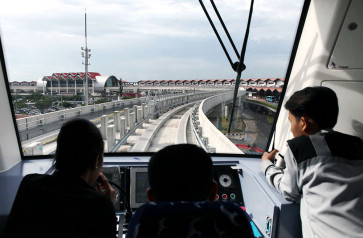Popular Reads
Top Results
Can't find what you're looking for?
View all search resultsPopular Reads
Top Results
Can't find what you're looking for?
View all search resultsDump travel blues: Smarter airports with data and analytics
Change text size
Gift Premium Articles
to Anyone
A
irports around the region and the world are facing constant pressure to expand. The growth of international business means more passengers are traveling for work. National tourist boards are also striving to promote the growth of leisure travel. How can airports in Indonesia accommodate this surge of travelers if there is no room to grow? The answer lies in technology.
As air traffic has continued to grow (by an average of almost 6 percent each year since 2006), airports have expanded their physical infrastructure, including runways, passenger and baggage terminals, transportation docks, and refueling facilities, and taken on multiple complex roles. Apart from handling the critical function of air traffic control, international airports, in particular, have morphed into shopping malls, advanced immigration and border security facilities, and perhaps most of all, flagship locations for promoting their country.
Indonesia’s Soekarno-Hatta International Airport, which was recently named among the top 50 best airports in the world is a perfect example of this.
As a result, nations are always keen to publicize their visitor numbers; the more passengers streaming through the airport terminals, the more appealing they seem as destinations for business or pleasure. Thus, expansion is constantly on the mind of airport operators.
However, it is often the case that physical, financial or social constraints impact how far airports can expand. The saga of the third runway at London Heathrow Airport is a case in point. Plans for this extra runway have been proposed, rejected, altered, and rejected again for almost 20 years, with no firm conclusion in sight.
Airport operators who cannot expand their infrastructure, due to space restrictions or a lack of capital, must find new approaches to be more efficient and responsive to the growing number of flights and passengers.
The sheer complexity of airport operations has a massive impact on efficiency. Every on-time departure depends on multiple factors such as ground clearance, air traffic control clearance, replenishing food and amenities, and refueling. A delay in any of these can lead to a domino effect on airport operations. Matters become even more challenging in the case of extreme weather or disruptive events.


















